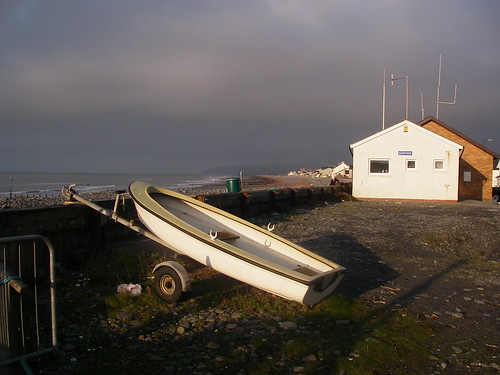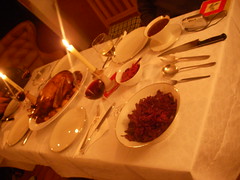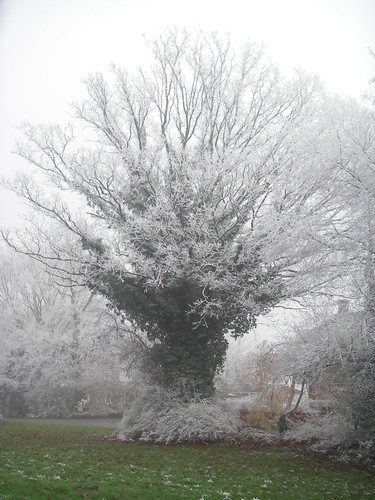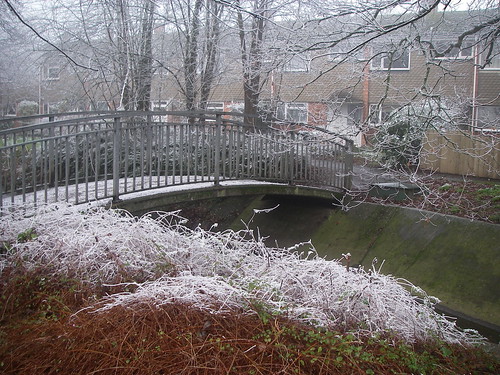A stroll on the Beach
Friday, December 29th, 2006
Jack frost was still around when we arrived in Borth for our Christmas break. The sky was clear, so I decided to go for a morning stroll. None of the others joined in. Soon I would know why.
The seaweed along the tide line was coated with frost. Borth is always full of surprises, and this time it was the many goose barnacle remains that were washed up (centre of photograph).
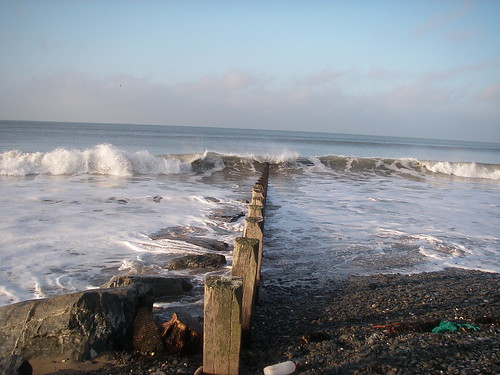
Poking around in the floatsam, I soon felt my fingers grow stiff. Although some hardened anglers lined the shore, it was way too cold to stay out for long. With the frost still paving the seawall, I decided to return to the warmth of the open fire back in the house to join the others for tea.

We spent the afternoon in Aberystwyth, doing some last-minute shopping. On the way back, we contemplated going for another walk to look for the submerged forest, but the tide was in. Moreover, stormclouds had begun to gather. But then, suddenly, the sun broke through, as if a celestial spotlight had been turned on

“Oh, that often happens here,” my sister said. “A hole appears in the sky and the sun shines through. Just over Borth, nowhere else.”
